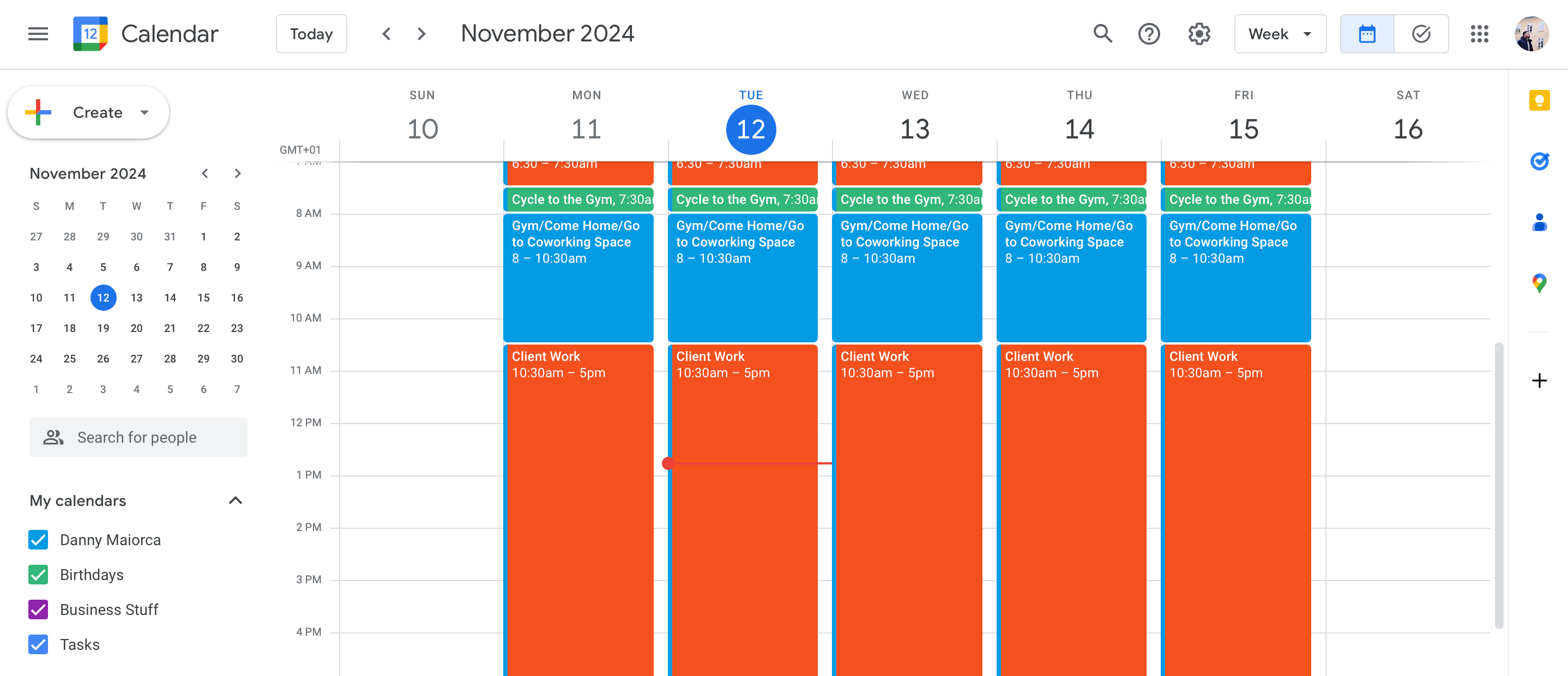I used to plan out every day, hour by hour. I would sit down the evening of the day before and write out an activity for each hour of the working day in an Excel spreadsheet. I have since moved on to a better alternative—task batching—which requires less effort and better fits my working habits.
What Is Task Batching?
The time management/productivity industry is built on the idea that humans want to squeeze the most out of every minute of the day. This has led to various strategies and systems designed to maximize and optimize these precious minutes.
Task batching is one of these strategies that promises a more productive day. Put simply, task batching involves taking tasks from a to-do list and grouping them based on similarity or the type of effort needed to complete them. For example, all tasks involving writing emails, making phone calls, or creative brainstorming can be grouped to be completed in a batch.
The idea behind task batching is to minimize the cognitive load caused by frequent task switching, which can drain focus and productivity. By concentrating on a single category of tasks at a time, you can work more efficiently, reduce errors, and enter a flow state more easily.
How Does Task Batching Differ from Time Blocking?
Task batching might seem similar to another productivity technique, time blocking, but they involve two different approaches to time management. Time blocking sections a day based on available hours, with an activity assigned to every working hour.
Task batching, on the other hand, divides a schedule based on the number of tasks to do and how closely related they are. With task batching, I can work on different categories of tasks for as long as I need to, without assigning specific time slots.
Task batching is still concerned with designating time slots for your activities. It wouldn’t be a time management technique otherwise. The difference is that the duration and frequency of these time slots are not the main focus.
Time-blocking never worked out for me. It brings a lot of organization to your day, perhaps a little too much. Working off a time-blocked calendar made me more frantic, and it was frustrating when I couldn’t meet an appointment or had to delay a task I had previously scheduled.
Why Task Batching Is More Effective
Task batching makes more sense with how I work and has been a less frustrating experience. I switch between tasks less frequently, and I am more comfortable rescheduling a task group to another period. I can channel my energy better throughout the day, which makes me more confident about what I’ve accomplished by the end of the day.
1. No Switching Costs
The most important advantage of task batching is that it prevents switching costs. A switching cost or shifting tax is the negative impact on performance and flow that results from shifting attention between tasks. If you have ever tried to multitask, e.g. drive and use a phone or watch a movie while texting, you will have noticed an adjustment period before your attention could refocus on the current task.
Switching between tasks eats up time and effort, and being interrupted while working, however brief, is proven to make people more anxious and frustrated. Task batching minimizes context switching by grouping similar activities. These tasks will be completed in one focused session, which usually means that they take less time and effort to complete.
To avoid distractions, it is usually good to communicate your focus hours with family and team members.
2. Greater Flexibility
Task batching is a more flexible productivity technique than time blocking. I can be flexible with time slots assigned to activities, which is especially great for creative tasks. For example, I can designate a Writing block and decide to postpone other tasks until I have accomplished all the writing tasks for the day.
While interruptions should be avoided as much as possible, task batching is usually more resilient to inevitable disruptions than time blocking. When an interruption occurs, I can pause and resume the work batch without completely disrupting my workflow or needing to replan my entire day.
3. Improved Productivity
While this is more on the subjective end, I have enjoyed more success with task batching than time blocking. I complete tasks in record time with less expended effort. Working in task batches also means that my time is easier to track, and I can see at a glance what I’m spending most of my time doing.
It is important to schedule regular rest periods to maintain energy levels and avoid burnout, no matter what productivity method you use.
I can also schedule low-effort activities for periods when my energy levels are at their lowest.
4. More Realistic Expectations
With time blocking, I was inclined to fill every second with activity and force myself to be productive even when it didn’t make sense. I wanted to be a Renaissance man and would try to fit an activity from every one of my interests in a day. It was time-consuming, overwhelming, and hardly paid off.
Time batching, on the other hand, keeps me grounded in reality. Tasks tend to take longer than the time I assign them and there is a limit to the number of activities I can take on in a day. It makes more sense to focus my energy on the most important tasks rather than spread myself thin over several efforts.
With time batching, I am more in tune with what a typical day looks like, and I can set my priorities more effectively. I use Microsoft To-do and Google Calendar, but there are a few other time management tools that can be helpful.
Despite what Cal Newport and other productivity experts say, scheduling every minute of your time is not going to work for everyone, especially those who get frantic looking at a fully time-blocked calendar. With time batching, it is easier to get lost in my work without watching how many minutes have passed and how much time I have left, which is definitely how I prefer to work.
Task batching is an incredible tool in my productivity arsenal, but it isn’t going to suit every working style either. There have been times when task batching has not been so helpful. However, task batching’s strength is its flexibility and adaptability. You can tweak things until you have a system that works for you.



